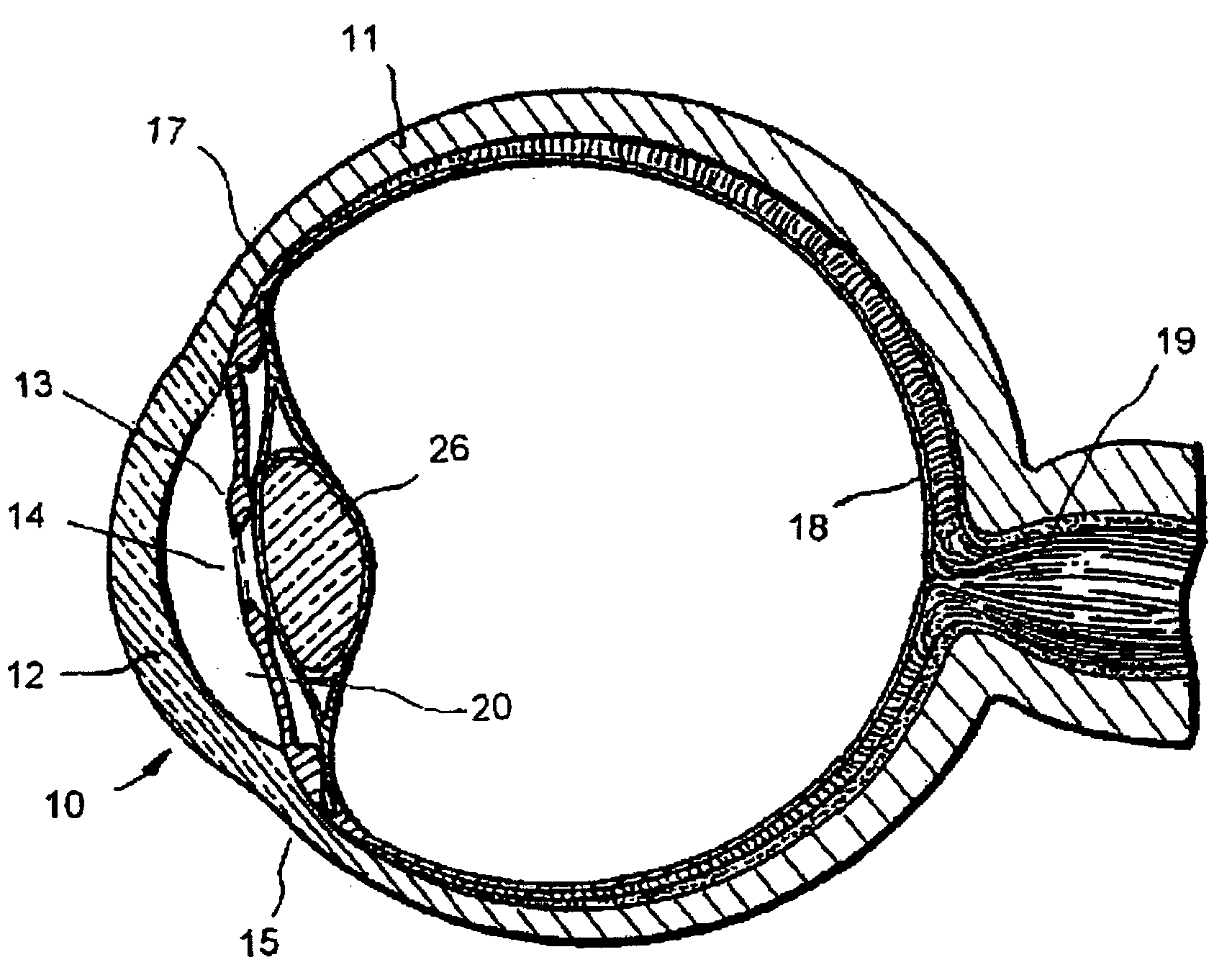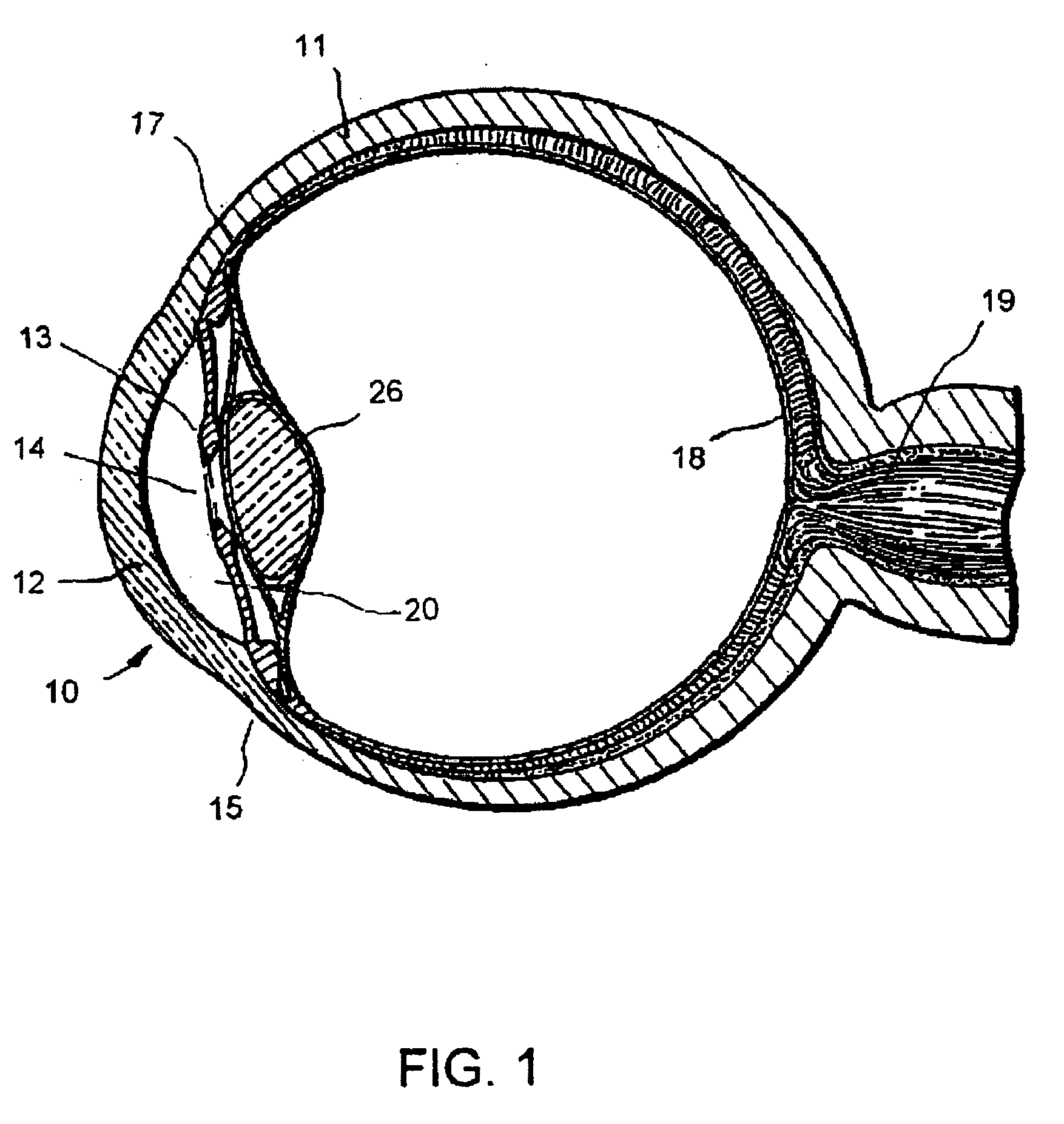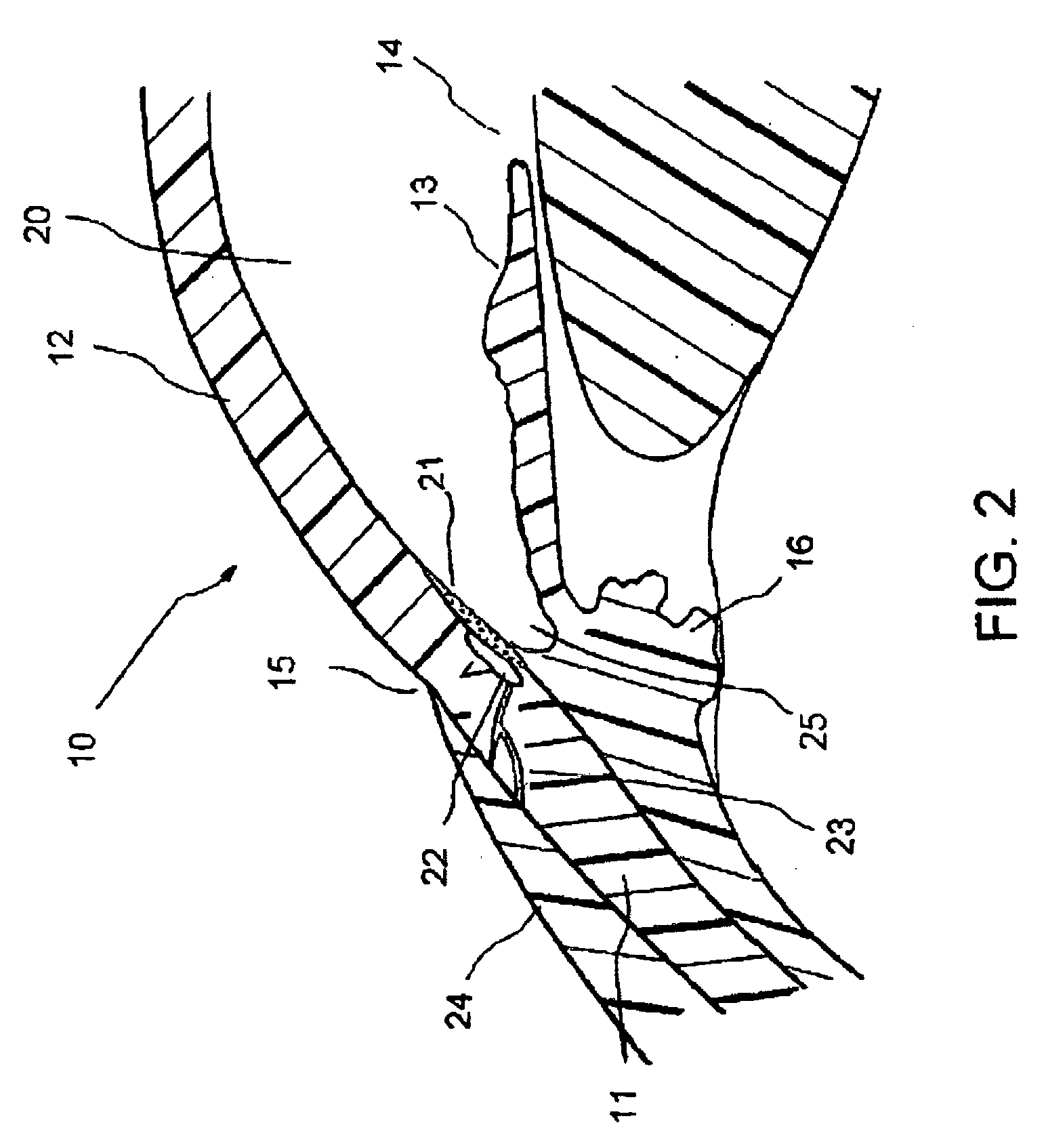Glaucoma implant with multiple openings
- Summary
- Abstract
- Description
- Claims
- Application Information
AI Technical Summary
Benefits of technology
Problems solved by technology
Method used
Image
Examples
Embodiment Construction
[0042] Referring to FIGS. 1 to 7, what is shown is a method for the treatment of glaucoma by trabecular bypass surgery. In particular, a seton implant is used to bypass diseased trabecular meshwork at the level of trabecular meshwork to use or restore existing outflow pathways and methods thereof.
[0043] For background illustration purposes, FIG. 1 shows a sectional view of an eye 10, while FIG. 2 shows a close-up view, showing the relative anatomical locations of the trabecular meshwork, the anterior chamber, and Schlemm's canal. Thick collagenous tissue known as sclera 11 covers the entire eye 10 except that portion covered by the cornea 12. The cornea 12 is a thin transparent tissue that focuses and transmits light into the eye and the pupil 14 which is the circular hole in the center of the iris 13 (colored portion of the eye). The cornea 12 merges into the sclera 11 at a juncture referred to as the limbus 15. The ciliary body 16 begins internally in the eye and extends along th...
PUM
 Login to View More
Login to View More Abstract
Description
Claims
Application Information
 Login to View More
Login to View More - R&D
- Intellectual Property
- Life Sciences
- Materials
- Tech Scout
- Unparalleled Data Quality
- Higher Quality Content
- 60% Fewer Hallucinations
Browse by: Latest US Patents, China's latest patents, Technical Efficacy Thesaurus, Application Domain, Technology Topic, Popular Technical Reports.
© 2025 PatSnap. All rights reserved.Legal|Privacy policy|Modern Slavery Act Transparency Statement|Sitemap|About US| Contact US: help@patsnap.com



